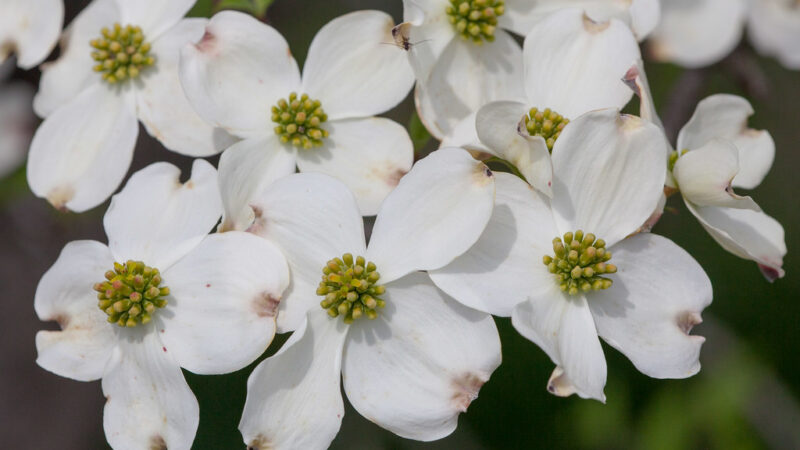Wintering the flowering dogwood

Successfully guiding a flowering dogwood through the winter months is crucial for ensuring its health and a vibrant display of blossoms the following spring. While mature, well-established trees are generally quite hardy, younger trees and those in more challenging climates can be vulnerable to the stresses of winter, including freezing temperatures, moisture loss, and physical damage. Proper preparation in the autumn and an understanding of the potential winter hazards are key to protecting the tree during its period of dormancy. A thoughtful approach to winter care helps to safeguard the tree’s delicate flower buds and ensures it emerges from the cold ready for a new season of growth.
Understanding dormancy and hardiness
Dormancy is a natural and essential phase in the life cycle of a flowering dogwood. It is a period of rest, triggered by the shortening days and falling temperatures of autumn, during which the tree’s metabolic activity slows down dramatically. The tree sheds its leaves to conserve water and energy, and growth ceases until the arrival of warmer weather in the spring. This dormant state allows the tree to survive the freezing temperatures and harsh conditions of winter that would otherwise damage its active growing tissues.
The flowering dogwood is typically hardy in USDA zones 5 through 9, meaning it can withstand minimum winter temperatures ranging from -20°F (-29°C) in zone 5 to 30°F (-1°C) in zone 9. However, hardiness is not just about surviving a single low temperature; it is also about the tree’s ability to withstand the overall conditions of winter, including fluctuating temperatures, wind, and sun. A tree that has been properly “hardened off”—a gradual process of acclimating to the cold in autumn—will be much more resilient than one that is suddenly exposed to a deep freeze following a warm spell.
The flower buds of the dogwood, which are formed during the previous summer, are a key consideration for winter hardiness. These buds are exposed on the tips of the branches throughout the winter and are more susceptible to cold damage than the rest of the tree. An unusually harsh winter or a late spring frost that occurs after the buds have begun to swell can damage or kill them, resulting in a sparse or non-existent floral display. While this is largely dependent on the weather, a healthy, well-cared-for tree will generally have more robust buds that are better able to withstand the cold.
The overall health of the tree plays a significant role in its ability to endure the winter. A tree that entered the autumn season stressed from drought, disease, or nutrient deficiency will be less prepared for the rigors of dormancy. This is why consistent care throughout the growing season is so important. Ensuring the tree has adequate moisture in the late summer and fall, for example, is critical for it to store the energy reserves needed to survive the winter and fuel its initial growth spurt in the spring.
More articles on this topic
Autumn preparations for winter
Preparing a flowering dogwood for winter begins in the autumn, well before the first hard frost. One of the most important tasks is to ensure the tree is well-hydrated. The dry air of winter can pull moisture from the tree’s branches and trunk, a process known as desiccation. If the autumn has been dry, it is crucial to provide deep, thorough waterings throughout the season until the ground freezes. A well-hydrated tree is much better equipped to handle the desiccating effects of winter winds and sun.
As autumn progresses and the leaves begin to fall, it is important to clean up all debris from around the base of the tree. Fallen leaves can harbor fungal spores and insect eggs, which can survive the winter and cause problems the following spring. Raking and removing this material is a simple but highly effective sanitation practice that reduces the potential for disease and pest issues. This clean area also makes it easier to apply a fresh layer of mulch.
Applying or replenishing the layer of organic mulch around the base of the tree is a vital autumn task. A two- to four-inch layer of wood chips, pine straw, or shredded leaves should be spread over the root zone, extending out to the drip line but kept several inches away from the trunk. This mulch layer acts as a blanket, insulating the soil from extreme temperature fluctuations. It helps to prevent the cycle of freezing and thawing that can heave the soil and damage the shallow roots of the dogwood.
Finally, it is important to cease all pruning and fertilization activities by late summer. Fertilizing late in the season can encourage a flush of new growth that will not have enough time to mature and harden off before winter arrives, making it extremely susceptible to frost damage. Similarly, pruning in the autumn can stimulate new growth and create wounds that do not have adequate time to heal before the onset of cold weather. Any necessary structural pruning is best left until the tree is fully dormant in late winter or early spring.
More articles on this topic
Protecting young trees from winter damage
Young flowering dogwoods, particularly those in their first few years after planting, are more susceptible to winter damage than their established counterparts. Their bark is thinner, and their root systems are less extensive, making them more vulnerable to the cold and other environmental stressors. One of the primary concerns for young trees is sunscald. This occurs on cold but sunny winter days when the sun warms the southern or southwestern side of the trunk, causing the cells to become active. When the sun sets, the temperature plummets, rapidly freezing and killing these active cells, resulting in a patch of dead, sunken, or cracked bark.
To prevent sunscald, the trunks of young trees can be protected with a commercial tree wrap or a plastic tree guard. This material should be light-colored to reflect the sun’s rays and should be applied in the late autumn, starting from the base of the tree and wrapping upwards to just above the lowest branches. The wrap should be snug but not tight enough to constrict the trunk. It is important to remove the wrap in the spring as the weather warms up to prevent it from trapping moisture and creating a haven for insects and diseases.
Protecting the root system of young trees is also critical. A consistent layer of mulch is the best defense, providing essential insulation. In very cold climates (such as USDA zone 5), an extra thick layer of mulch can be applied after the ground has frozen slightly. This helps to keep the ground frozen, preventing the damaging freeze-thaw cycles. This extra mulch should be pulled back from the trunk in the spring to allow the soil to warm up.
Physical damage from animals is another winter threat for young trees. Rodents like mice and voles may chew on the tender bark at the base of the tree when other food sources are scarce, potentially girdling and killing the tree. Rabbits can cause similar damage higher up the trunk. Installing a plastic tree guard around the base of the trunk is an effective deterrent against this type of damage. The guard should be tall enough to protect against the anticipated snow depth and should be pressed slightly into the soil to prevent rodents from tunneling underneath.
Managing snow, ice, and wind
Heavy snow and ice accumulation can pose a significant threat to flowering dogwoods, particularly due to their characteristic horizontal branching structure. The weight of wet, heavy snow or solid ice can put immense strain on the branches, leading to bending, cracking, or complete breakage. While the tree’s natural form is part of its beauty, it can also make it more susceptible to this type of winter damage compared to trees with more upright growth habits.
If a heavy snow falls, it can be beneficial to gently remove some of the accumulation from the branches, especially if it is a wet, heavy snow. This should be done very carefully using a broom or a soft pole, pushing upwards from below the branches. It is important to never shake the branches or pull downwards, as this can increase the stress and cause them to snap. If the branches are already encased in a thick layer of ice from an ice storm, it is usually best to leave them alone. Attempting to remove the ice is more likely to cause the brittle, frozen branches to break.
Winter winds, especially in exposed locations, can contribute to branch damage and can also have a significant drying effect on the tree. The constant wind can strip moisture from the bark and buds, leading to a condition known as winter burn, where parts of the tree appear scorched and dead in the spring. If the dogwood is planted in a particularly windy site, constructing a temporary windbreak for the winter months can be helpful, especially for a young tree. This can be as simple as installing a few stakes and stretching burlap between them on the windward side of the tree.
After a severe winter storm, it is important to inspect the tree for damage once it is safe to do so. If branches are broken, they should be pruned back to the nearest healthy branch collar or to the trunk using a clean, sharp saw. Making a proper pruning cut is essential to help the tree seal the wound effectively. Minor cracks or tears in the bark will typically heal on their own, but large, jagged breaks may require a professional arborist to assess and perform corrective pruning to ensure the long-term structural integrity of the tree.
📷 Flickr / Szerző: David Illig / Licence: CC BY-NC-SA 2.0



















